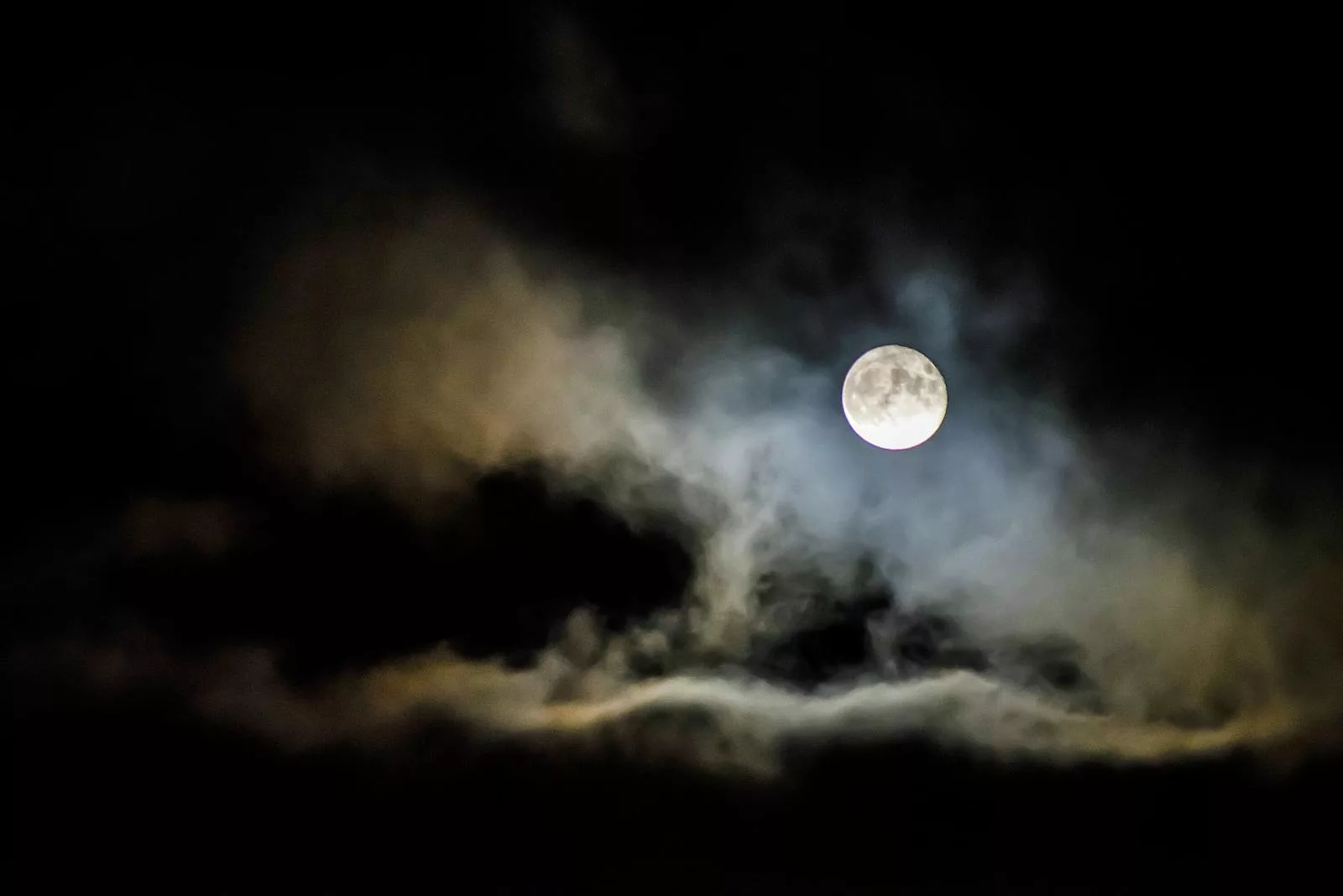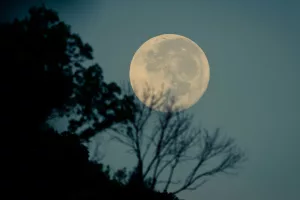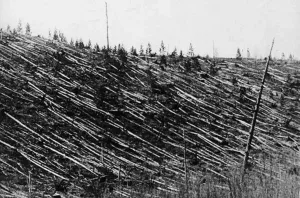The Moon, Earth’s only natural satellite, has captivated human curiosity for millennia. Its striking presence in the night sky and its influence on Earth’s natural rhythms have made it a central figure in myths, legends, and cultural practices worldwide. People have gazed at the Moon in wonder, attributing supernatural powers to its phases and creating stories to explain its enigmatic nature.
Beyond its cultural significance, the Moon has been a subject of intense scientific investigation. Its formation, surface features, and relationship with Earth reveal a story of cosmic events that shaped our solar system. From its creation in a fiery collision to its role in affecting tides and stabilizing Earth’s tilt, the Moon remains a vital and fascinating part of our world. Here are 15 incredible facts about the Moon that will deepen your appreciation for our celestial neighbor.
1. The Moon Was Formed from a Giant Impact
The leading theory about the Moon’s origin is the Giant Impact Hypothesis. Scientists propose that around 4.5 billion years ago, a Mars-sized protoplanet named Theia collided with the early Earth. This catastrophic collision ejected massive amounts of debris into space, which eventually coalesced under gravity to form the Moon.
Evidence supporting this hypothesis lies in the Moon’s composition, which is remarkably similar to Earth’s crust. The similarities suggest a shared origin, further solidifying the idea that our celestial companion was born from this cosmic collision.
2. The Moon Is Moving Away from Earth
The Moon is slowly drifting away from Earth, moving at an average rate of about 3.8 centimeters (1.5 inches) per year. This gradual separation is caused by tidal interactions between the Earth and Moon. As Earth’s rotation transfers energy to the Moon, it pushes the satellite into a slightly higher orbit over time.
This phenomenon has fascinating implications for the distant future. As the Moon moves farther away, it will appear smaller in the sky. Eventually, it may no longer fully cover the Sun during a solar eclipse, altering one of the most iconic celestial events visible from Earth.
3. It’s Responsible for Tides on Earth
The Moon’s gravitational pull is the primary force behind Earth’s ocean tides. As the Moon’s gravity pulls water toward it, a bulge forms on the side of Earth facing the Moon, creating high tide. Simultaneously, centrifugal forces result in a second bulge on the opposite side, causing another high tide.
Tides are not just a fascinating natural phenomenon but also play a vital role in shaping marine ecosystems. They influence the behavior of marine species, impact coastal navigation, and drive the ebb and flow of nutrients in oceanic environments, making the Moon an essential player in Earth’s ecological balance.
4. The Moon Has Quakes
The Moon experiences seismic activity known as moonquakes, though their causes and characteristics differ from earthquakes. Moonquakes can result from tidal forces exerted by Earth’s gravity, the expansion and contraction of the Moon’s surface due to temperature changes, or even impacts from meteoroids.
Interestingly, some moonquakes can last over 10 minutes. Unlike Earth, the Moon lacks a water-filled crust to absorb vibrations, allowing seismic waves to reverberate for extended periods. This unique phenomenon highlights the Moon’s distinct geological nature and provides valuable data for understanding its interior structure.
5. Its Surface Is Covered in Regolith
The Moon’s surface is blanketed in a layer of fine dust and rocky debris known as regolith, which gives it its distinctive gray and powdery appearance. This layer was formed by billions of years of meteoroid impacts, each collision breaking rocks into finer particles. Over time, the constant bombardment shaped the Moon’s surface into the rugged, cratered terrain we see today.
Regolith is not just ordinary dust; its composition includes tiny glass beads formed by ancient volcanic activity and impact heat. This unique texture caused challenges for the Apollo astronauts, as it clung stubbornly to their suits, tools, and equipment. Despite these difficulties, studying regolith has provided valuable insights into the Moon’s geological history and the processes that shaped it.
The presence of regolith also offers opportunities for future lunar missions. Scientists are exploring ways to use this material to create building supplies for lunar habitats, making it an essential resource for sustaining long-term human exploration on the Moon.
6. The Moon Is Tidally Locked to Earth
The same side of the Moon always faces Earth, a phenomenon known as tidal locking. This occurs because the Moon’s rotation period perfectly matches its orbit around Earth, taking about 27.3 days to complete each cycle. As a result, we only ever see the near side of the Moon from Earth, while the mysterious far side remained unexplored until the mid-20th century.
Tidal locking is the result of gravitational forces between Earth and the Moon. Over millions of years, Earth’s gravity slowed the Moon’s rotation, aligning it with its orbital period. This unique relationship has created the illusion of a static Moon, even though it is constantly rotating and orbiting.
The far side of the Moon, often mistakenly called the “dark side,” is just as illuminated by the Sun as the near side. Its surface is marked by more craters and fewer maria (dark plains) than the near side, offering clues about its different geological history. Modern missions, like China’s Chang’e 4, continue to study this enigmatic region.
7. The Moon Has Extreme Temperature Swings
Without an atmosphere to regulate temperature, the Moon experiences some of the most extreme temperature changes in the solar system. During the lunar day, temperatures can reach a scorching 127°C (260°F), hot enough to boil water. Conversely, at night, temperatures plummet to a frigid -173°C (-280°F), colder than any natural temperature ever recorded on Earth.
These temperature extremes pose significant challenges for exploration and habitation. Spacecraft and equipment must be designed to endure the intense heat during the day and the deep cold at night. Astronauts rely on specially insulated suits and temperature-controlled modules to survive in such an unforgiving environment.
Interestingly, the temperature swings also create unique phenomena, such as thermal fracturing, where rocks crack and crumble due to rapid heating and cooling. These processes contribute to the constant evolution of the Moon’s surface, reminding us of its dynamic, ever-changing nature.
8. It Influences Animal Behavior
The Moon’s phases have long been observed to influence animal behavior, particularly in species sensitive to light and tidal patterns. For instance, some coral species synchronize their spawning with the full Moon, ensuring their reproductive cycles align for maximum success. Predators like lions are more active during darker lunar phases, taking advantage of reduced visibility to hunt more effectively.
Even humans have been said to be influenced by the Moon. Folklore often links the full Moon to changes in sleep patterns, mood, and behavior, though scientific evidence remains inconclusive. Some studies suggest that people may experience slightly less deep sleep during a full Moon, but the reasons for this are still debated.
These connections highlight the Moon’s profound impact on Earth’s ecosystems. From marine life to terrestrial predators, the cycles of the Moon continue to shape the rhythms of life on our planet, reinforcing its role as a vital force in nature.
9. The Moon Has Ice
Scientists have discovered water ice in permanently shadowed craters at the Moon’s poles, where sunlight never reaches. This ice is believed to have been delivered by comets and meteoroids over billions of years. Another possibility is that interactions between the lunar surface and solar wind contributed to its formation, creating a unique reservoir of frozen water in these cold, dark regions.
Lunar ice is more than a scientific curiosity; it holds immense potential for future space exploration. It could be harvested to provide drinking water for astronauts, and through electrolysis, the ice can be split into hydrogen and oxygen—essential components for rocket fuel. This resource could pave the way for sustainable human presence on the Moon and even serve as a stepping stone for deeper space missions.
10. The Moon’s Gravity Is Only 1/6th of Earth’s
The Moon’s gravity is much weaker than Earth’s due to its significantly smaller mass. Objects on the Moon weigh only 16.5% of their weight on Earth, making activities like jumping and lifting far easier. During the Apollo missions, astronauts took advantage of this lower gravity to perform giant leaps and carry heavy equipment with ease, a phenomenon vividly captured in iconic footage.
This reduced gravity creates unique challenges and opportunities for exploration and future settlement. For instance, construction and movement require less energy, but long-term exposure to low gravity could affect human health, including muscle and bone density. Scientists are still studying these effects to better prepare for extended lunar missions and eventual colonization efforts.
The Moon’s lower gravity also impacts its environment in other ways, such as contributing to its lack of a substantial atmosphere. Without sufficient gravity to hold atmospheric gases in place, the Moon remains exposed to space, highlighting the interplay between gravitational force and planetary characteristics.
11. It Has No Atmosphere
Unlike Earth, the Moon lacks a substantial atmosphere capable of supporting weather, clouds, or breathable air. Instead, it has a tenuous exosphere composed of trace amounts of gases like helium, neon, and argon. This exosphere is so thin that it doesn’t provide protection from meteoroids or harmful solar radiation, making the lunar surface an inhospitable environment for life as we know it.
The absence of an atmosphere means that the Moon’s surface is directly exposed to space. As a result, it experiences extreme temperature fluctuations and is constantly bombarded by solar wind and cosmic rays. This exposure also contributes to the formation of the Moon’s regolith, as meteoroids continuously impact the surface without atmospheric resistance.
While the lack of an atmosphere presents challenges for human exploration, it also provides scientific advantages. The Moon’s unfiltered view of space makes it an ideal location for astronomical observatories, allowing scientists to study the universe without the distortion caused by Earth’s atmosphere.
12. The Moon Has Been Visited by 12 Humans
Between 1969 and 1972, 12 astronauts from NASA’s Apollo program walked on the Moon, marking a historic era of human exploration. The first was Neil Armstrong, who famously described his step as “one small step for man, one giant leap for mankind” during the Apollo 11 mission. The last person to set foot on the Moon was Eugene Cernan, the commander of Apollo 17, who left humanity’s final footprints on the lunar surface.
These missions were not just symbolic achievements; they provided invaluable insights into the Moon’s geology and history. Astronauts collected rock and soil samples, deployed scientific instruments, and conducted experiments that deepened our understanding of the Moon’s formation and its relationship with Earth. The data gathered during these missions continues to influence planetary science and exploration strategies.
The legacy of these lunar explorers serves as a foundation for future missions. With renewed interest in returning to the Moon, space agencies like NASA and private companies are planning ambitious projects to establish a sustainable human presence on the lunar surface, using the Apollo missions as inspiration and a guide.
13. Lunar Eclipses Occur When Earth Blocks the Sun
A lunar eclipse occurs when Earth passes directly between the Sun and the Moon, causing Earth’s shadow to fall on the lunar surface. This celestial alignment results in three distinct types of eclipses: total, partial, and penumbral. Each type offers a unique view of the Moon as it interacts with Earth’s shadow, creating a spectacle that has fascinated skywatchers for centuries.
During a total lunar eclipse, the Moon often takes on a reddish hue, an effect caused by sunlight scattering through Earth’s atmosphere before reaching the Moon. This phenomenon, known as Rayleigh scattering, filters out blue light and allows red wavelengths to dominate, earning the event the nickname “Blood Moon.” Lunar eclipses are not only awe-inspiring but also serve as reminders of the intricate dance between celestial bodies in our solar system.
14. The Moon Was Instrumental in the Development of Calendars
The Moon’s phases have been a cornerstone in tracking time for thousands of years, deeply influencing the development of early calendars. Ancient civilizations, such as the Babylonians and Egyptians, relied on the lunar cycle to mark the passage of months and seasons. The cycle, lasting approximately 29.5 days, provided a natural rhythm that aligned closely with agricultural and religious practices.
Even in modern times, the Moon continues to play a vital role in calendar systems. Lunar calendars, such as those used in Islamic and Chinese traditions, remain integral to cultural and spiritual observances. These calendars are not only a testament to the Moon’s historical importance but also a reminder of its enduring influence on human life.
15. The Moon May Hold Clues to Earth’s Past
Because the Moon lacks weather and plate tectonics, its surface preserves a record of impacts and conditions from billions of years ago. Studying the Moon can provide insights into the early history of the Earth-Moon system, including the events that shaped our planet’s development.
The Moon continues to be a source of wonder and discovery. From its role in stabilizing Earth’s axial tilt to its potential as a stepping stone for interplanetary exploration, our nearest celestial neighbor holds many secrets waiting to be uncovered. As space agencies and private companies plan future missions, the Moon remains a vital focus for scientific and human exploration.




